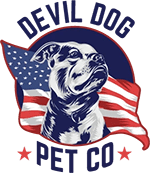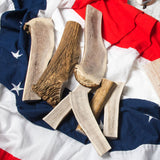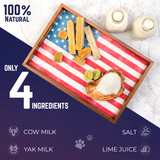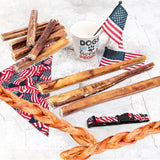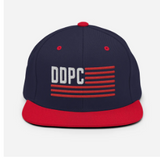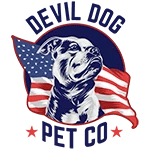Choosing the right chew treat for your dog is essential, not just for their enjoyment but also for health and safety reasons. One popular type of treat is antler chews, which come primarily from two sources: deer and elk. These natural chews offer unique benefits, but it's important to understand their differences to determine which one is better suited for your furry friend.
Deer antlers are praised for their all-natural composition and the wealth of nutrients they provide to canines. They tend not to splinter easily, ensuring a lower risk of injury to your pet. On the other hand, elk antlers are known for their larger size and higher marrow content, providing a longer-lasting and more flavorful chewing experience for dogs. Elk antlers also have a softer outer core, making them easier to grind down for dogs that enjoy chewing but are not aggressive chewers.
In order to make an informed decision about which antler type is best for your dog, it's important to consider factors such as their size, chewing habits, and nutritional needs. By understanding the key differences between deer and elk antlers, pet owners can provide their dogs with a satisfying and safe chew that promotes dental health and contributes to their overall well-being.
Deer Antlers vs. Elk Antlers: Key Differences
Deer and elk antlers are popular choices for dog chews, but it's essential to understand the key differences between the two. These distinctions include factors such as size, density, and availability.
 Deer antlers are generally smaller and easier to find than elk antlers. They come from various deer species like white-tail, roe, and mule deer, which are smaller in size, with a height of 3.5 feet, a length of 7 feet, and a maximum weight of 300 pounds (source). As a result, deer antlers are often more suitable for smaller dogs. Their size allows dogs to handle them easily, minimizing the risk of choking or injury (However, Devil Dog Pet Co offers elk antlers in smaller chewing sizes and even split elk antler dog chews to be more accessible to dogs of all sizes).
Deer antlers are generally smaller and easier to find than elk antlers. They come from various deer species like white-tail, roe, and mule deer, which are smaller in size, with a height of 3.5 feet, a length of 7 feet, and a maximum weight of 300 pounds (source). As a result, deer antlers are often more suitable for smaller dogs. Their size allows dogs to handle them easily, minimizing the risk of choking or injury (However, Devil Dog Pet Co offers elk antlers in smaller chewing sizes and even split elk antler dog chews to be more accessible to dogs of all sizes).
On the other hand, elk antlers originate from larger animals that can reach over 5 feet in height, over 9 feet in length, and weigh up to 800 pounds (source). Consequently, elk antlers are typically larger, making them a better option for medium and large dogs. In addition to their size, elk antlers vary in density depending on which part of the antler is selected. This variation can be beneficial for dogs with different chewing preferences and habits.
Regarding availability, deer antlers are more common and usually easier to acquire. Elk antlers can be harder to find, but they provide a unique choice for pet owners looking for something different. Devil Dog Pet Co is proud to be a trusted source of Elk Antler Dog Chews in sizes that accommodate dogs of all sizes.
Benefits of Antlers for Dogs
Antlers are a popular choice for pet owners searching for natural and nutritious chews to satisfy their dogs' chewing instincts. Both deer and elk antlers offer a range of benefits that contribute to maintaining overall pet health.
One of the primary reasons pet owners cherish antler chews is their ability to support dental health. Chewing on antlers helps in reducing plaque buildup and keeps the gums healthy. The hard texture of antlers acts as a natural toothbrush, which aids in scraping away tartar while strengthening the jaw muscles.
Antlers are also rich in essential minerals such as calcium, phosphorus, potassium, magnesium, zinc, and iron. These minerals are vital for maintaining strong bones, muscles, and overall body function. Offering an antler chew to a dog not only satiates their natural chewing instincts but also provides supplemental nutrition.
In addition, antler chews tend to last longer than other chews, making them a more cost-effective option for powerful chewers. The marrow found in antlers is packed with nutrients that dogs find tempting, ensuring they stay engaged and focused on their chew, which in turn helps to alleviate boredom and anxiety.
The durability of antler chews means they are less likely to splinter than bones or other toys, making them a safer option for dogs. However, it is essential to monitor your pet during their chew sessions and remove any small pieces that may break off, reducing any risk of injury or choking.
Safety and Precautions
When considering giving your dog antler chews, it is important to focus on safety and take necessary precautions. Antlers from different animals, such as moose, elk, white-tailed deer, and mule deer, have varying densities and properties that may affect their safety for use as dog chews.
Moose antlers are softer than other antlers and are often sold in different slices and shapes, offering various options for pet owners. In contrast, elk antlers vary in density, with some parts being denser than others. Deer antlers, including those from white-tailed and mule deer, can also be suitable for dogs but may have unique characteristics that set them apart from other antler chews.
Regardless of the type of antler, it is essential to select the appropriate size and shape for your dog's chewing habits and strength. Strong chewers may need denser antlers to reduce the risk of breaking off larger pieces that could be swallowed. Supervision is crucial when giving antlers, particularly for novice or aggressive chewers with a higher risk of choking on smaller fragments.
Some veterinarians recommend split elk antlers as an alternative for dogs with sensitive teeth, as they expose the softer marrow inside, making them easier to chew. It's crucial to supervise your dog while they are chewing an antler to ensure their safety and prevent any potential risks.
In addition to selecting the appropriate antler, pet owners should regularly inspect the chew for signs of excessive wear or splintering. When such damage is observed, it is best to replace the antler to maintain its safety. Furthermore, introducing antlers gradually and monitoring your dog's response to the chew can help identify any sensitivity or adverse reactions.
Choosing the Right Type of Antler for Your Pet
Finding the perfect antler chew for your dog is crucial for keeping them engaged, ensuring their safety, and providing the appropriate size and density. Both elk and deer antlers are popular choices for natural antler chews, but they offer different benefits depending on your dog's needs.
Elk antlers are typically larger in size and less dense than deer antlers, making them ideal for dogs who suffer from anxiety or have a gentle chewing style. The fact that they are less dense means they tend to break down more quickly, which can be helpful for puppies or less aggressive chewers. Elk antlers are known for their softer marrow composition, which makes for a safe and enjoyable chewing experience for your dog.
Deer antlers, on the other hand, are smaller and more dense, making them a great option for dogs who are heavier chewers. Moose antlers are another option to consider but are not as widely available as deer and elk antlers. However, moose antlers can be more expensive and harder to find than elk or deer variations.
When choosing the right antler chew for your dog, it is essential to consider their size, weight, and chewing habits. You should select an antler size appropriate for your dog's weight and chewing preferences. For example, a small antler chew may be suitable for a toy-breed puppy, whereas a larger dog will require a much larger antler to withstand their chewing strength. Remember that if your pup is on the upper edge of a size range or a more vigorous chewer, it is advisable to purchase the next size up.
Regardless of the type of antler you choose, make sure it is a high-quality, natural product free from additives and chemicals. This will ensure that your dog is receiving a safe and healthy chewing experience that can support their dental and overall canine health.
Devil Dog Pet Co offers two types of Elk Antler Dog Chews: whole and split. We only sell Grade A+ elk, which represents less than 5% of all antlers sold and is the highest quality antler chew you can give your pup. Both whole and split elk antler chews are sold in various sizes to suit any size of dog (see product details for a sizing chart).
Frequently Asked Questions
What are the pros and cons of antlers for dogs?
Antlers have several benefits for dogs, including being long-lasting, natural, and generally safe to chew. They don't splinter easily like other toys and bones, saving you money on chew toys for powerful chewers. However, some dogs might find antlers too hard to chew, leading to potential dental problems. It is essential to monitor your dog while chewing and selecting an appropriate size and type of antler chew.
Is it better to choose split or whole antlers?
The choice between split and whole antlers mainly depends on your dog's chewing habits. Split antlers reveal the delicious marrow inside, making them suitable for less aggressive chewers. On the other hand, whole antlers are recommended for more powerful chewers, as they last longer and provide a more significant challenge.
What are the differences between elk and deer antlers?
Elk and deer antlers differ in size, density, and texture. Elk antlers are larger, making them suitable for bigger dogs. They are also less dense and have a more porous composition, making them easier to chew than deer antlers. In contrast, deer antlers are denser and harder, suited for aggressive chewers.
